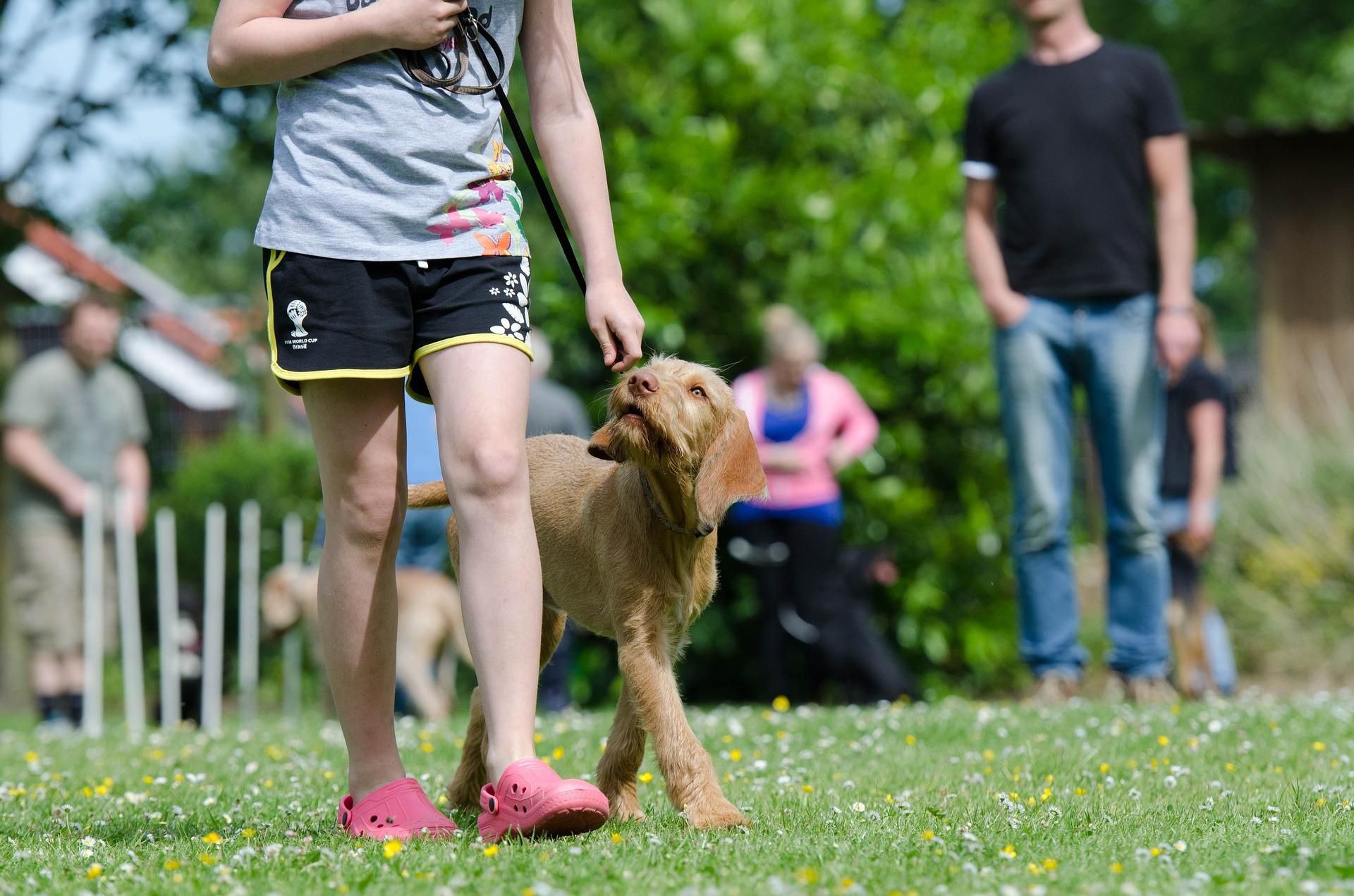The Pros and Cons of Dog Board and Training Every Owner Should Know
Dog board and training delivers expert guidance and faster results, but owners must balance the benefits with cost, separation, and...

When life gets busy, many dog owners struggle to find the time and consistency needed to properly train their pets. That’s where dog board and training programs come in. These programs allow you to leave your dog with professional trainers for a set period, usually ranging from a week to several months. During this time, your pup gets daily training sessions along with care, socialization, and structure.
Sounds convenient, right? But like anything else, dog board and training has both advantages and drawbacks. Let’s break them down so you can decide if it’s the right fit for your furry friend.
What Is Dog Board and Training?
Dog board and training is a program where your dog stays at a trainer’s facility instead of at home. While there, your dog receives consistent training sessions throughout the day, supervised play, and structured routines. Trainers typically work on obedience, leash walking, crate training, and correcting problem behaviors. Some programs are short-term and focus on basic manners, while others last longer and tackle complex issues like aggression or anxiety. The idea is simple: your dog learns good habits in a controlled environment and returns home with better behavior.
The Pros of Dog Board and Training
Board and train programs can be life-changing for both dogs and their owners. From professional expertise to faster results, here’s why many pet parents choose this option.
1. Professional Training and Expertise
When you send your dog to a board and train program, you’re handing them over to professionals who know how to deal with different breeds and temperaments. These trainers are skilled at spotting behavior problems quickly and applying proven solutions. Instead of you experimenting at home, your dog benefits from years of hands-on knowledge. This can make training more efficient and reduce mistakes that might slow down progress.
2. Consistency and Structure
Dogs thrive on routine. At home, it’s easy to be inconsistent—sometimes rewarding good behavior, sometimes letting things slide. In a structured training environment, rules are always clear, and every command is reinforced. This repetition makes it easier for your dog to learn and remember commands. Over time, the consistency helps build discipline, turning learned commands into long-term habits.
3. Faster Results
One of the biggest advantages of dog board and training is speed. Since your dog is training multiple times a day, progress happens much faster compared to weekly lessons or at-home practice. A dog that struggles with leash manners, for example, could show improvement within weeks. For owners who want results quickly—especially for problem behaviors—this can be a major benefit.
4. Ideal for Busy Owners
Not everyone has hours to dedicate to training their dog each week. For working professionals, parents, or frequent travelers, dog board and training is a practical solution. Your dog continues to make progress while you focus on your responsibilities. This setup ensures that your pet doesn’t miss out on training opportunities, even when your schedule is packed.
5. Socialization Opportunities
Board and train programs often expose dogs to other dogs, people, and different environments. This helps reduce shyness, fear, or aggression by teaching your pup how to behave around new experiences. For young dogs or rescues, this type of structured socialization can be especially valuable. It builds confidence and makes your dog more adaptable in the real world.
6. Good for Problem Behaviors
Some behaviors, like aggression, excessive barking, or separation anxiety, can be tough for owners to handle alone. Trainers in a board and train setting have the time, patience, and expertise to tackle these issues directly. They use proven methods to correct the behavior while ensuring your dog feels safe and supported. This specialized focus is something most owners simply can’t provide on their own.
The Cons of Dog Board and Training
While the benefits are clear, there are also downsides that you need to consider before enrolling your dog.
1. Cost Can Be High
Professional training isn’t cheap, and board and train programs are among the more expensive options. Depending on the trainer’s reputation and the length of the stay, costs can range from several hundred to several thousand dollars. For some families, this price may feel out of reach. It’s important to view it as an investment in your dog’s long-term behavior and well-being before deciding.
2. Limited Owner Involvement
A potential drawback is that you aren’t the one doing the training. While your dog may respond perfectly to the trainer, they still need to learn to follow your commands at home. Without your involvement in follow-up lessons, the training may not stick. Owners must commit to continuing the work once their dog returns to ensure long-term success.
3. Separation Anxiety for Dogs (and Owners)
Being apart from your dog for days or weeks can be emotionally challenging. Some dogs may feel confused or stressed in a new environment, especially during the first few days. At the same time, owners often struggle with leaving their pets behind. While many dogs adjust quickly, separation anxiety is still a factor worth considering.
4. Varying Training Methods
Not all trainers follow the same philosophy. Some rely on positive reinforcement, while others may use stricter techniques. If you’re not comfortable with certain training methods, you’ll need to carefully research facilities before enrolling. Always ask questions and ensure the approach aligns with your values and your dog’s temperament.
5. Transition Back Home
Even after successful training, the real challenge begins when your dog comes back home. Dogs often behave perfectly with trainers but may test boundaries with their owners. Without consistency and reinforcement at home, your dog could slip back into old habits. This makes owner involvement after the program just as important as the training itself.
How to Decide if Dog Board and Training Is Right for You
Choosing whether to enroll your dog in a board and train program depends on your lifestyle, your dog’s needs, and your willingness to follow up. If your dog struggles with serious behavior problems or if your schedule makes training difficult, this program could be a lifesaver. On the other hand, if you’re looking for a budget-friendly option or want hands-on involvement, weekly classes or private lessons may be a better fit. Take the time to weigh both sides before making your decision.
Tips for Choosing the Right Dog Board and Training Program
If you decide to move forward, here are some tips to make sure you choose the right program:
- Research the Trainer’s Background: Look for certified trainers with proven success.
- Visit the Facility: A clean, safe, and welcoming environment matters.
- Ask About Training Methods: Make sure they use techniques you’re comfortable with.
- Understand the Program Length: Choose one that fits your goals and budget.
- Request Follow-Up Support: Good programs include owner lessons for continued success.
These steps will help you find a reliable program that suits both you and your dog.
Maintaining Training at Home After the Program
Once your dog comes back home, your job is to keep the progress going. Stick to the commands your trainer taught, and practice short sessions every day. Consistency is the key to success. Be patient, reward good behavior, and remember that learning is a process. Over time, the training your dog received at the facility will blend seamlessly into their daily routine at home.
Final Thoughts
Dog board and training offers a structured, professional way to improve your dog’s behavior quickly. The pros include expert guidance, faster results, and better socialization. But the cons—like cost, separation anxiety, and the need for follow-up—are just as important to keep in mind.
If you decide to go this route, make sure you research trainers carefully and commit to reinforcing the training at home. When done right, a board and train program can strengthen your dog’s skills and make your life as a pet owner much easier. For guidance tailored to your dog’s needs, Prestige Dog Training is here to support you with expert care and proven methods.



